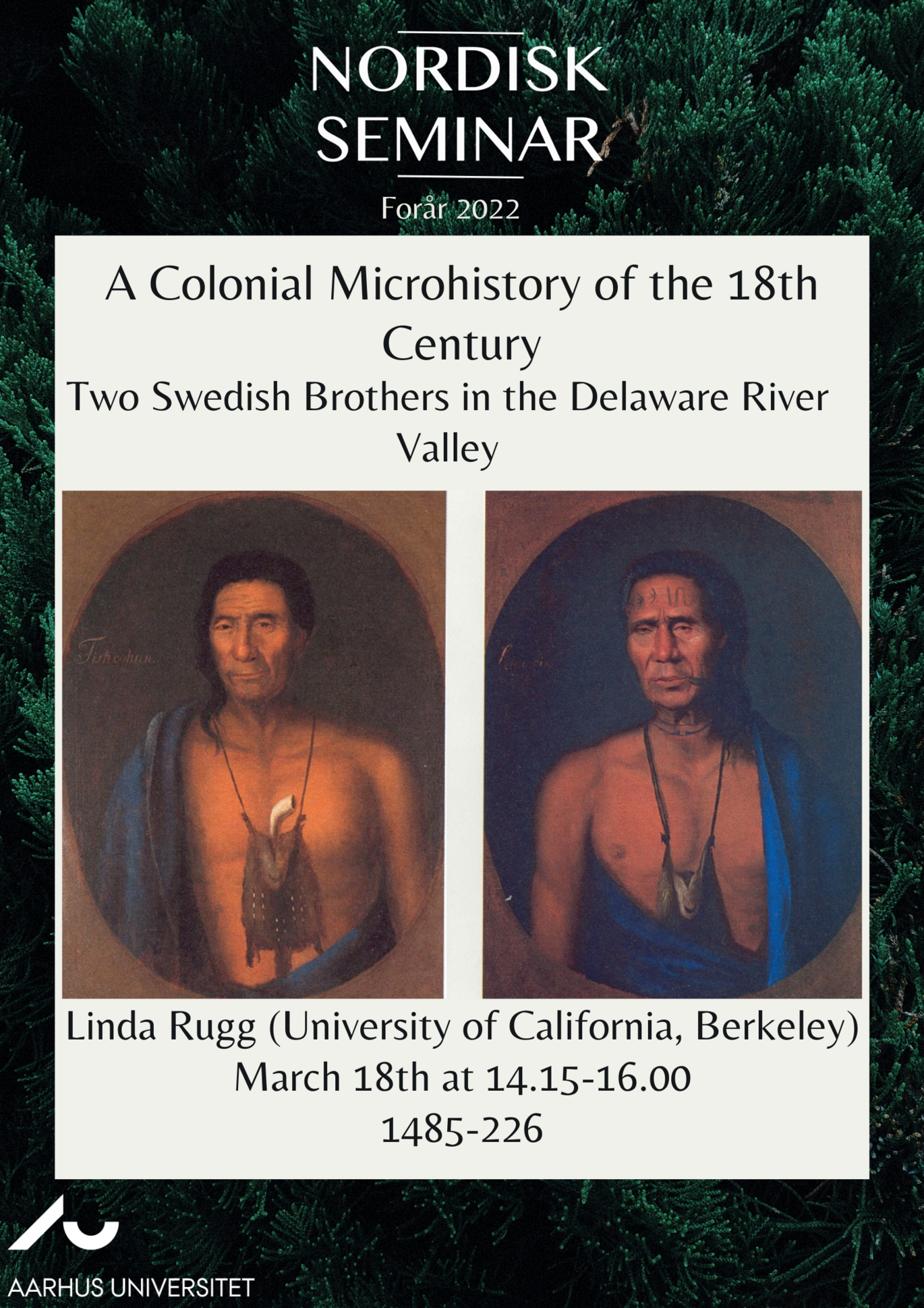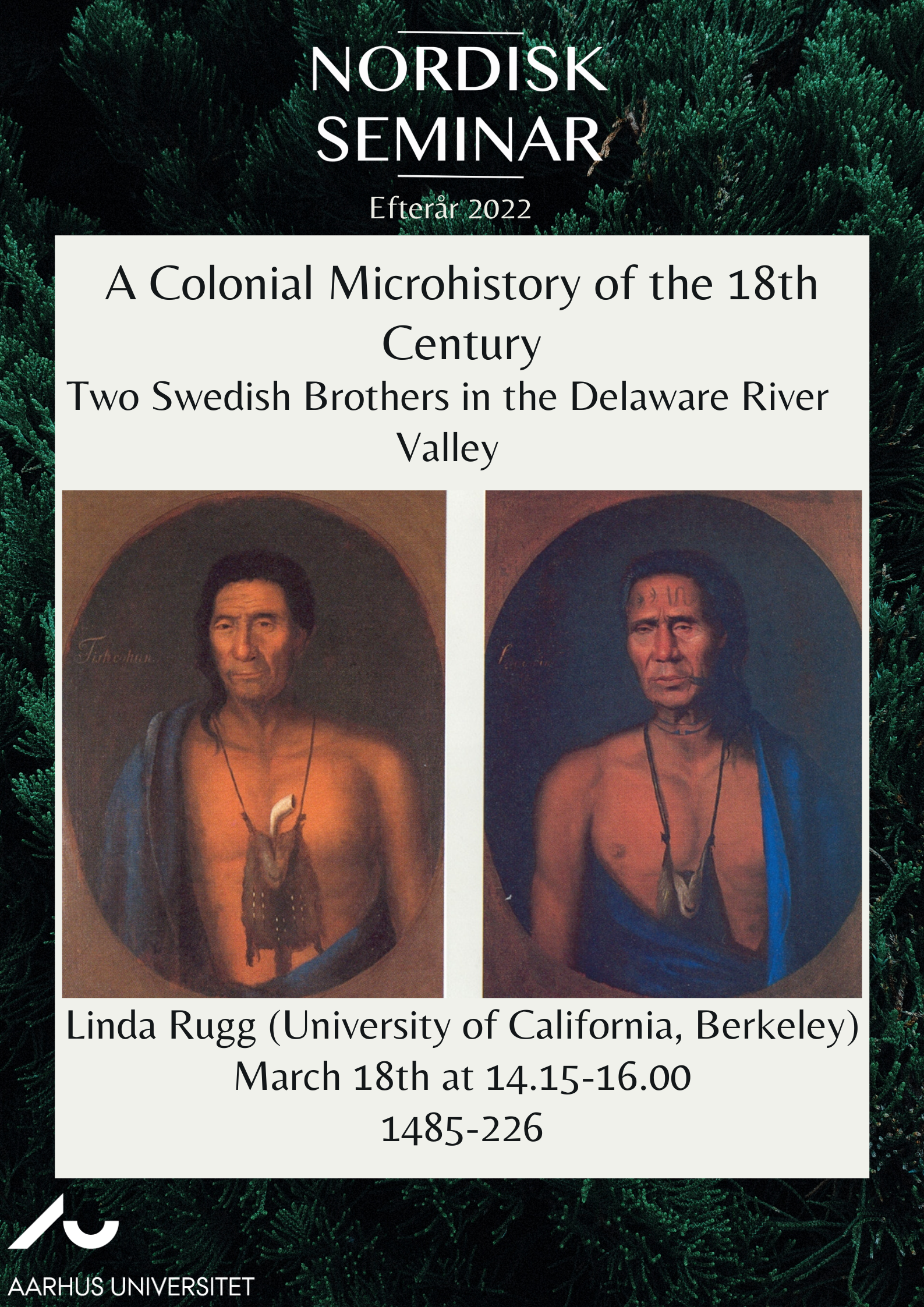A Colonial Microhistory of the 18th Century: Two Swedish Brothers in the Delaware River Valle
A presentation about a Colonial Microhistory of the 18th Century. The presentation will be in English.

Info about event
Time
Location
Lokale 1485-226
Price

A Colonial Microhistory of the 18th Century: Two Swedish Brothers in the Delaware River Valley
In May of 1712, Andreas and Gustavus Hesslius, sons of a Dalcarlian cleric family, landed on the shore of the Chesapeake Bay. Within an hour of their landing, as they walked through a forest alive with the birdsong, colors, and scents of springtime, they encountered two Lenape men, who were wearing only blankets slung over their shoulders. The Lenape offered a polite "Haita" (Hello) to the startled foreigners and continued casually on their way. This was the opening encounter for Andreas (a priest) and Gustavus (a painter) with the natural environment and indigenous inhabitants of the "New World." In the coming years, the brothers would record their impressions, perceptions, and thoughts on the Native people of the Delaware River Valley in writing and painting. My study focuses on the question of whether it is possible for settler colonists to resist, critique, or evolve out of the cultural frameworks and mindset that made colonialism possible. Or does life as a colonial lead to a reification of these frameworks? Looking at the writing and painting of two individuals from the same family, Swedish colonists living under British colonial rule, I consider how they were transformed (or not) by their direct experience with Native people and a new cultural and natural environment.
Free entrance. Also available at Zoom.
